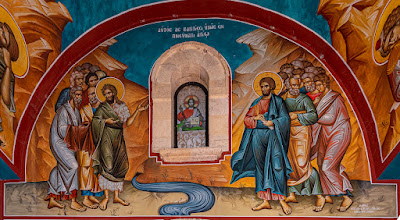The Revised Common Lectionary gospel text for Lectionary 30 (on 23 October 2022) is Luke 18.9-14, the parable told be Jesus commonly known as "The Pharisee and the Tax Collector." There are some interesting word choices that need to be made (just- or right- cognates? exalt / lift up / promote <> humble / bring down?), so you may want to check my translation and notes.
We have had all these parables lately in the lectionary, and one resource I recommend is Robert Farrar Capon's Kingdom, Grace, Judgment: Paradox, Outrage, and Vindication in the Parables of Jesus. (Affiliate link) I really think he has the right idea about how the parables work. You may not always agree with him, but he's always provocative in a way that I have found him to be a good conversation partner with this parables. For this Pharisee and tax collector parable, check out this short reflection. (It's from a 1983 interview on the Chicago Sunday Evening Club and 30 Good Minutes. The original transcript is no longer on the web, but the link is to where someone preserved it.) He gets right to the heart of why it should not be easy to preach this parable. Are you just hoping for the tax collector coming back and being able to humble-brag pray like the Pharisee? "The answer is we fear salvation that is so cheap that it saves everyone in his or her death." And to see just how hard it is for people to hear this, check out the interview that followed Capon's presentation HERE. The interviewer just can't get his head around it despite Capon's insistence the parable is about death and resurrection, not about being a better person.
One other resource to note if you are not familiar with it is the GoTell website. Lots of excellent stuff. Check under the Stories header to find comments on specific texts. Here is the page for Luke 18.9-14.















